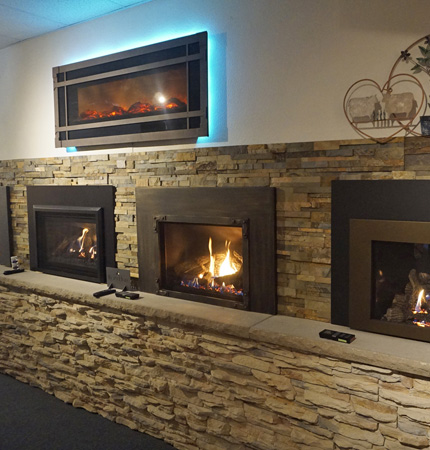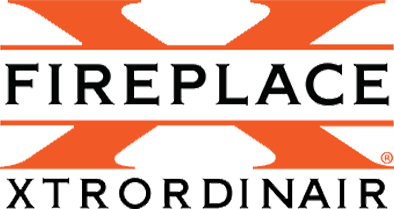Do Gas Fireplaces Have a Flue?
Some gas fireplaces are vented and have a flue, but ventless models are also available. Combustion fumes are removed from the home with a flue, but the traditional chimney is not the only venting option. Choices in gas fireplace venting mean that consumers can set up gas fireplace installation of a unit that best suits their home, whether it is a gas fireplace complete with a flue or not.
 Two Types of Vented Gas Fireplace Technology
Two Types of Vented Gas Fireplace Technology
If you have a vented gas fireplace, it does not necessarily mean that you need a chimney. Yes, B vent gas fireplaces aka natural vent fireplaces utilize a chimney and flue. Oftentimes, these gas fireplaces can actually be installed inside an existing open masonry fireplace.
Direct-vent gas fireplace flues are completely different. Combustion fumes are expelled through a system that also draws air for combustion from the outside. The venting can run horizontally from the appliance to a nearby wall.
Pros and Cons of Vented Gas Fireplaces
Pros of choosing a gas fireplace with B vent or direct-vent technology:
- The flames look more realistic, like the fires produced by wood fuel.
- Your home is free of all exhaust fumes with direct-vent models.
- Direct-vent technology allows gas fireplace installation in any room with an exterior wall.
- No (cold) outside air is needed to feed combustion fumes.
Cons of Gas Fireplaces with Flues
- The flames are behind glass with no access.
- Significantly more expensive than ventless gas fireplaces.
- More restrictions on appliance placement than ventless hearth appliances.
Ventless Fireplaces
Each vent-free fireplace has a regulator that ensures a clean burn of the fuel. Testing of ventless fireplaces is required by federal regulations. Before a ventless fireplace can be sold to consumers, it must be tested at a national laboratory to ensure that federal standards of safety and health are met.
Oxygen detection sensors (ODSs) and carbon monoxide (CO) detectors are built into many vent-free fireplaces. The lack of an intake vent for fresh air means that the oxygen in the home is burned. The ODS will automatically shut the fireplace off if the oxygen level has dropped low enough to become a health threat.
Pros of Ventless Fireplaces
- Heat permeates a room more completely and quickly.
- More affordable than direct-vent fireplaces.
- Options for where to install a direct-vent fireplace are numerous.
Cons of Vent-Free Fireplaces
- A higher burn temperature is necessary, resulting in less realistic flames.
- Combustion gases are vented into your home.
- Condensation and mold growth in the home can occur from increased humidity.
- Minimum clearance to combustibles is required.

Contact Dubuque Fireplace & Patio Today
Visit the showroom at Dubuque Fireplace & Patio to see a wide range of options in gas fireplaces with a flue and without. Your home will get a boost in market value with the addition of a new fireplace. Our chimney technicians are NFI-certified experts. We can help you choose the gas fireplace, gas logs, or gas fireplace accessories that are right for your home. Call us at Dubuque Fireplace & Patio today at (563) 582-5156. In or around Highland WI, visit the showroom at our sister store Chimney Specialists Inc. or give them a call at (608) 929-4887.



















